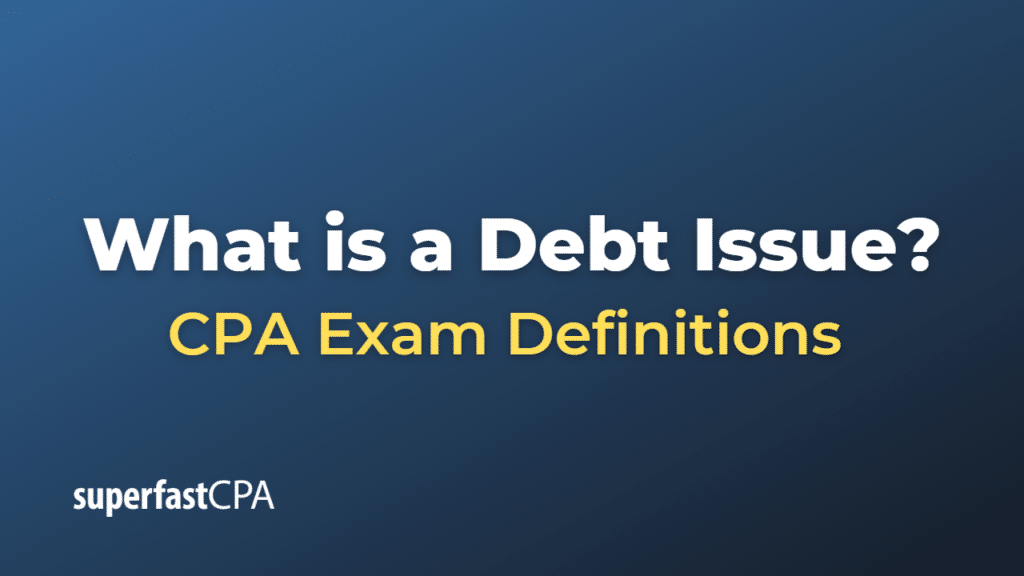Debt Issue
A debt issue refers to a fixed corporate or government obligation, such as a bond or a debenture, that allows the issuer to raise funds by promising to repay a lender the funds under terms of a contract. Essentially, it’s a method of raising capital by borrowing money from investors.
In a debt issue:
- The issuer is the entity (corporate or government) that needs to raise capital and thus issues the debt.
- The principal is the amount that the issuer borrows.
- The interest rate (or coupon rate) is the rate that the issuer agrees to pay to the investor for the use of the borrowed funds.
- The maturity date is the date at which the issuer must repay the principal to the investor.
Debt issues are typically used when a company or government needs to raise funds for projects, acquisitions, or other expenses, and they are willing to pay interest to investors in exchange for the use of their capital.
The terms and structure of debt issues can vary widely. For example, some debt issues might offer interest payments semi-annually, while others might be zero-coupon bonds that pay no interest but are sold at a discount to their face value.
For the issuer, debt issues can be a way to raise funds without diluting ownership, as would happen with issuing new shares. For the investor, debt issues can provide regular income from interest payments and, assuming the issuer is creditworthy, a relatively lower risk investment compared to equity investments.
Example of a Debt Issue
Suppose XYZ Corporation, a large manufacturing company, wants to build a new factory costing $50 million. However, they do not have sufficient cash on hand and do not want to sell additional shares and dilute the ownership stake of current shareholders.
Instead, XYZ Corporation decides to issue corporate bonds, a form of debt, to raise the necessary capital. They structure their debt issue as follows:
- Principal Amount: Each bond has a face value (principal) of $1,000, and they issue 50,000 bonds to raise the needed $50 million.
- Interest Rate: The bonds carry a coupon (interest) rate of 5% per year, paid semi-annually. This means that each bondholder will receive $50 per year (5% of $1,000), split into two payments of $25 every six months.
- Maturity Date: The bonds have a 10-year maturity, meaning XYZ Corporation will pay back the principal amount to bondholders in 10 years.
Investors who buy these bonds are essentially lending money to XYZ Corporation in exchange for regular interest payments and the promise to have their principal returned at the end of the bond’s term. XYZ Corporation, in turn, gets the necessary funding for its new factory project, with the obligation to repay this debt over time.
It’s important to note that while this example is straightforward, actual corporate debt issues can be much more complex, involving various terms and conditions depending on the issuer’s needs and market conditions. For example, some bonds might have variable interest rates, callable features, or other provisions.













